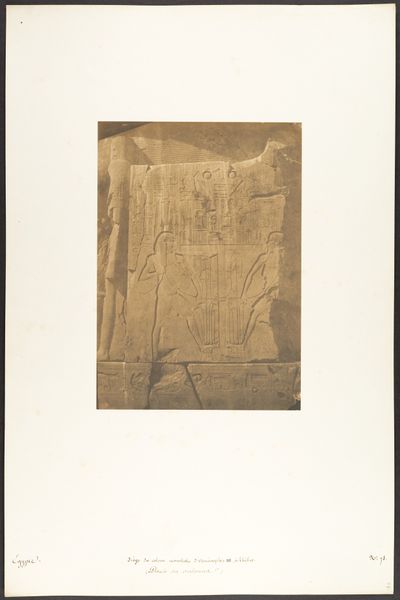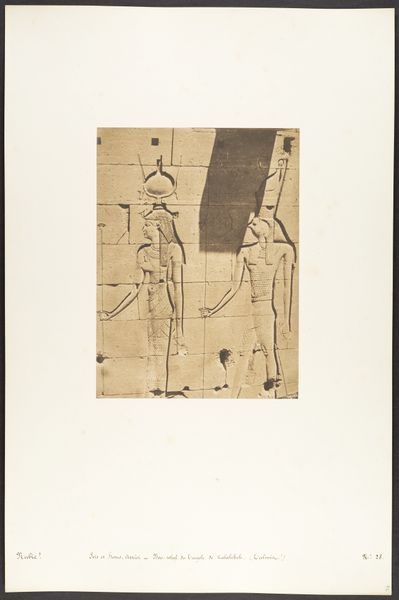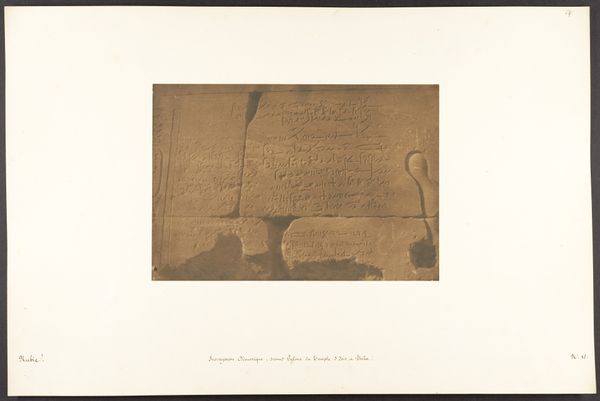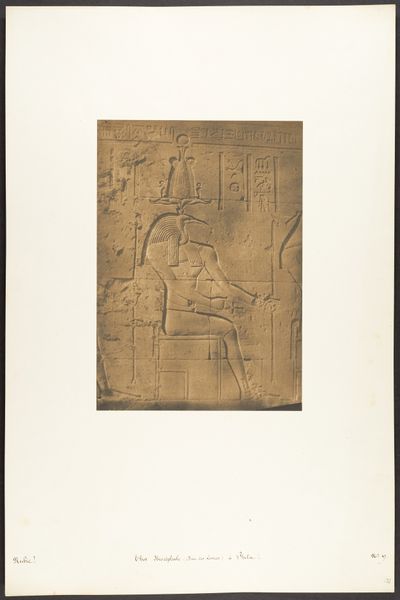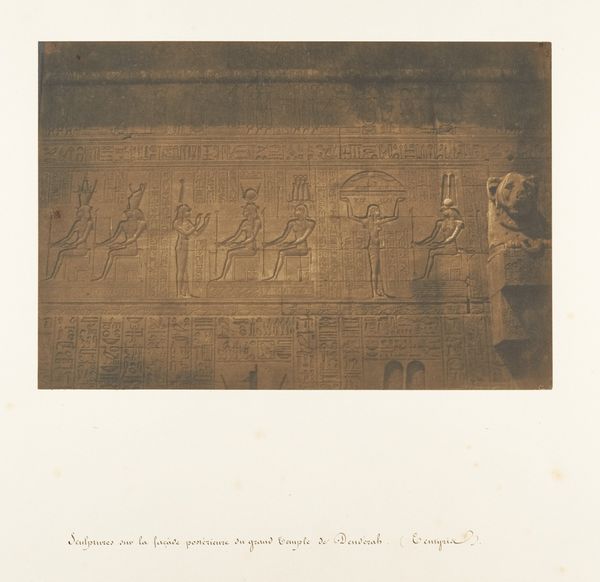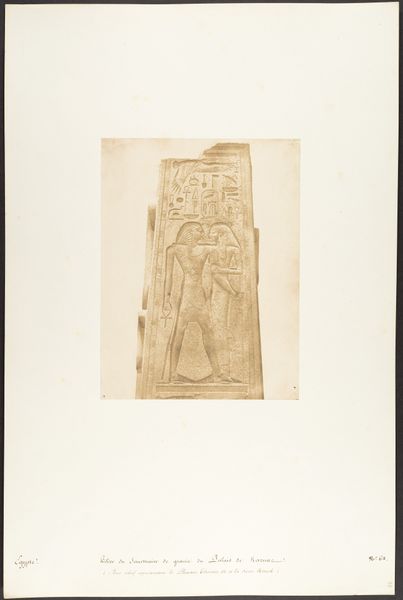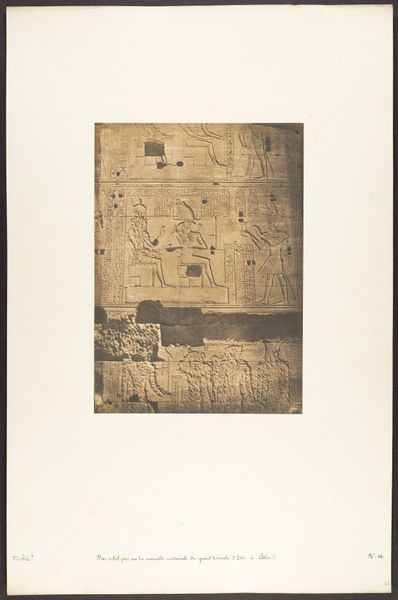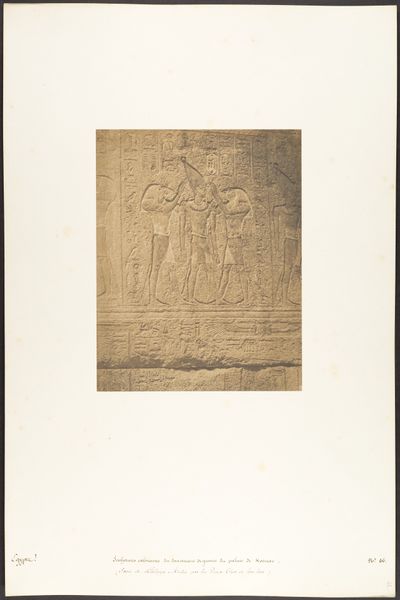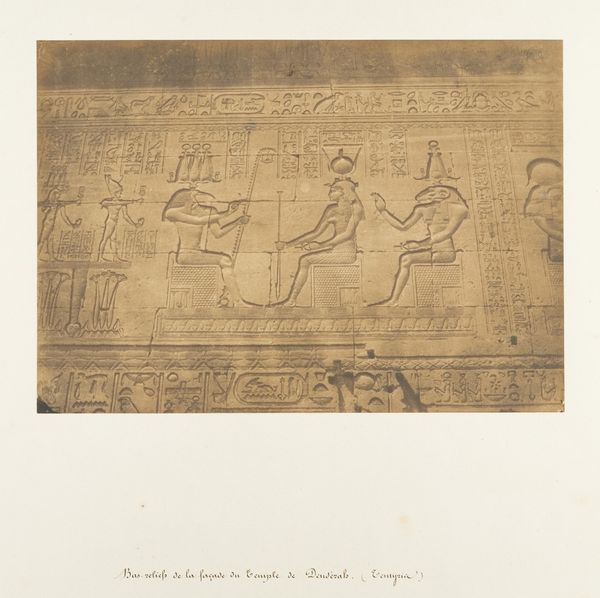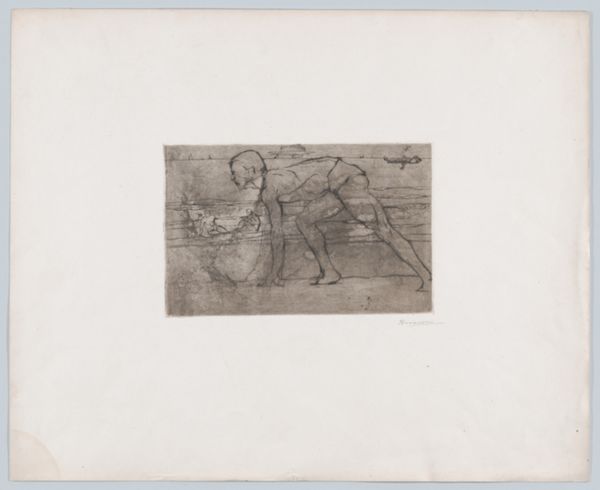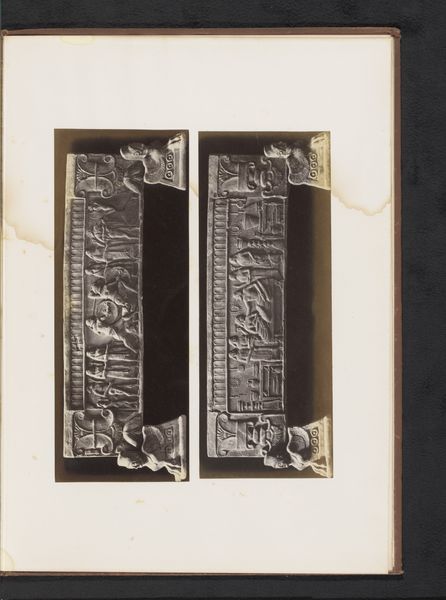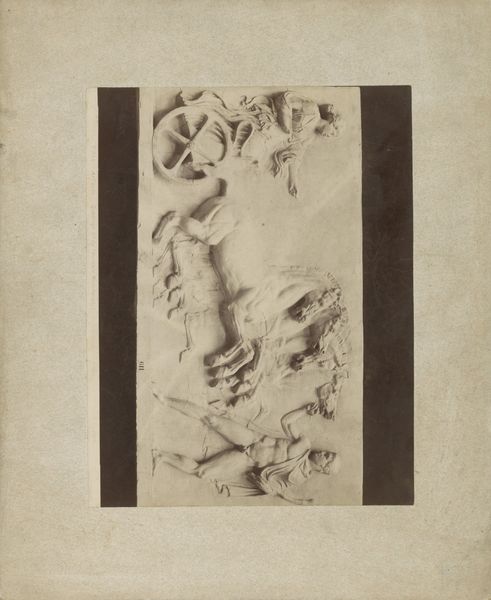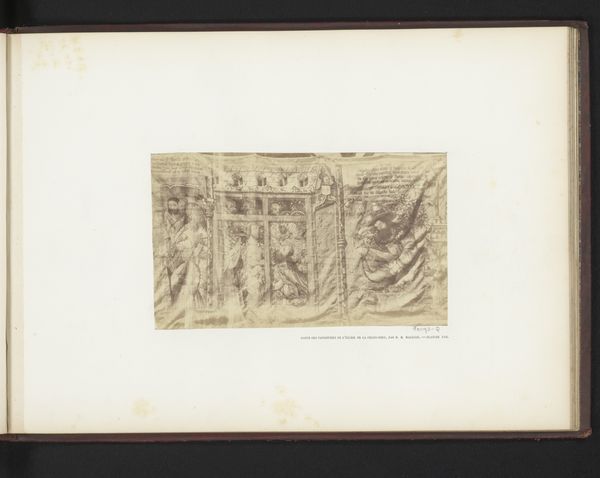
Sculptures extérieures du Sanctuaire de granit du Palais de Karnac (Ammon assurant la couronne sur la tête de Philippe-Aridée) 1849 - 1850
0:00
0:00
relief, photography, sculpture, gelatin-silver-print
#
portrait
#
relief
#
ancient-egyptian-art
#
photography
#
ancient-mediterranean
#
sculpture
#
gelatin-silver-print
#
history-painting
Dimensions: Image: 6 1/8 in. × 8 in. (15.5 × 20.3 cm) Mount: 12 5/16 × 18 11/16 in. (31.2 × 47.5 cm)
Copyright: Public Domain
Curator: This photograph, a gelatin-silver print dating from 1849-1850, captures a relief from the Karnak Temple. It's titled "Sculptures exterieures du Sanctuaire de granit du Palais de Karnac (Ammon assurant la couronne sur la tete de Philippe-Aridee)," and was taken by Maxime Du Camp. What strikes you first about it? Editor: Honestly? A feeling of immense, silent weight. It's not just the literal stone but the feeling of time pressing down, all these eras stacked atop each other in the same space. Does that make sense? Curator: Perfectly. Du Camp's photograph serves as a powerful document of ancient Egypt's engagement with its own past. He recorded this moment of artistic preservation when this scene showed Ammon crowning Phillip-Aridee was captured anew. Think of the layers: Egyptian sculptors carving this relief, and then a 19th-century photographer like Du Camp trying to make his own history by making visible this older one. The imperial weight isn't incidental. Editor: Absolutely, it’s the collision of empires and representations of power. I love how the photograph, despite its limitations in reproducing the relief's full scale, transmits such solemnity. And that granular texture—it’s as if the image itself is aging before our very ears. I want to know: why this image? Curator: Because archaeology was fashionable! The burgeoning interest in Egypt at this time made Du Camp's work quite popular and the work that he produced was the popular visual representation for this moment. This picture circulated and solidified how folks saw, understood and, quite frankly, imagined this period in time. And his images democratized access. Previously you had to be wealthy and intrepid, perhaps even an imperial agent to view these sites. Now you only need to find the work on paper. Editor: So it's not just the figures being crowned; it’s an image being crowned, canonized within our visual lexicon of Ancient Egypt! And you’re spot on about accessibility, which in its own way subtly repositions power: the camera offering a kind of equality or a means of controlling what narratives about the place circulated more widely. Fascinating! Curator: Indeed. In looking at it today, through a very different lens, we not only connect with that ancient scene but also grapple with our own relationship to it as mediated through Du Camp’s artistic and socio-political gaze. Editor: A powerful picture of layered histories. Thanks for untangling those threads, so much there that I know I couldn't have figured out on my own!
Comments
No comments
Be the first to comment and join the conversation on the ultimate creative platform.
